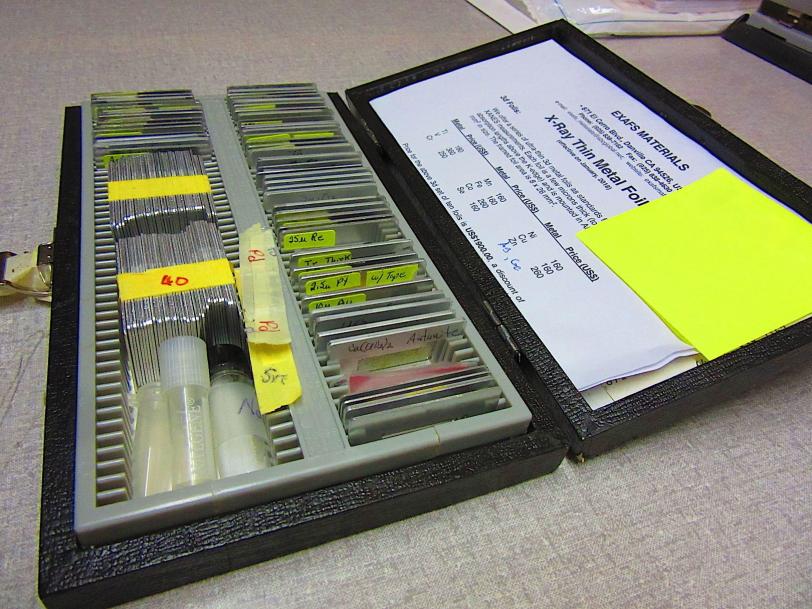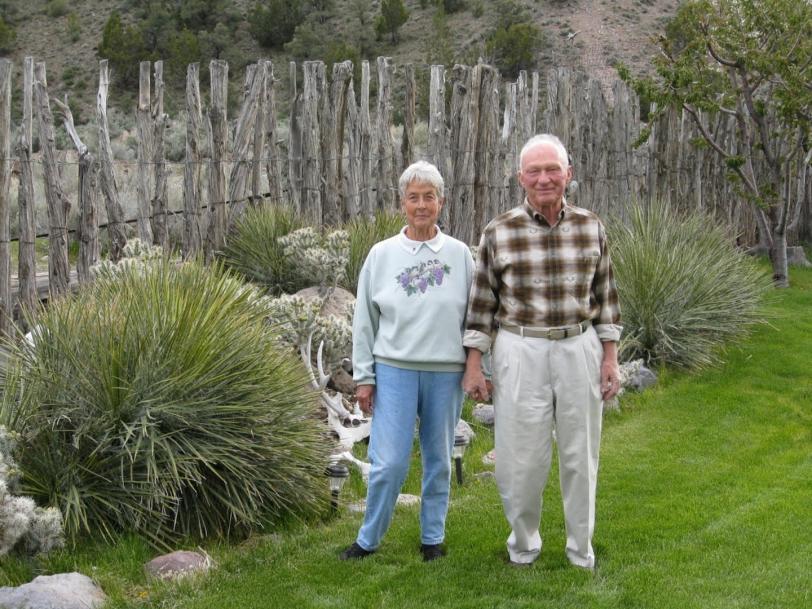A SLAC Legend Gives the Lab His Lifetime Collection of Precious Foils
The foils, each made from a single chemical element, are used to calibrate X-ray equipment at SLAC’s SSRL synchrotron, and were donated by long-time user, Farrel Lytle.
By Bobbi Fagone
Scientists who conduct experiments at the Stanford Radiation Synchrotron Lightsource (SSRL) have received an unusual and highly valuable gift—a library of element calibration foils for a technique used to understand the structure of matter called X-ray absorption spectroscopy.
SSRL, a DOE Office of Science user facility at the SLAC National Accelerator Laboratory, offers scientists extremely bright X-ray beams to probe samples at the atomic and molecular level. X-ray absorption spectroscopy is used in a variety of studies, including physics, materials science, chemistry (such as the study of catalysts used to promote and control many chemical reactions), earth science and biology.
The foils were donated by entrepreneur, scientist and X-ray spectroscopy pioneer, Farrel W. Lytle, and include precious metals such as gold, silver, platinum, iridium and many other elements in the periodic table.
“The machines on the beam lines at SSRL are not always absolutely correct,” Lytle explains. “They may vary a little bit. So, scientists can use these pure elements to do a measurement, and then adjust their instrumentation so it’s exactly right.”
Each foil is a tiny strip of metal one-fifth of the thickness of a postage stamp, similar to a piece of cellophane. “You can get some of these elements in bulk, but not thin like this,” says Lytle. This is vital because the X-rays need to penetrate the element to complete the measurement. Over the years, Farrel made many of the foils himself or had them created by a machinist. But the entire collection, valued at $10,000, took a lifetime to build.
“I measured my first X-ray edge on a synchrotron in 1974 at SSRL,” Lytle recalls. “But I had been working on this problem in my own lab with my own equipment since 1960. Because whenever you change the experiment, you change the chemistry and you need new reference compounds.
“This collection of thin metal foils may not look like much, but it represents all of the different elements that I worked on during my career,” he continues. “Some of those most difficult to obtain are of interest for current projects at SSRL. While many elements are easily available as pure, thin foils (such as copper, silver and gold) many others are hard, brittle, rare and not available commercially. So, these elements would have to be created using difficult and/or expensive techniques.”
Fortunately, the foils are not consumed in the experiments when used as reference samples, so they can be used over and over again. Lytle describes the process as “just like shining a light on them.” The measured X-ray spectrum (a fingerprint-type of X-ray picture) of the pure metal is used to calibrate the experimental apparatus, and also to observe the changes to the atomic and electronic environment of the same type of element when exposed to the conditions of the experiment.
An SSRL Trailblazer Gives Back
A long-time visiting user of SSRL, Lytle is a well-known SLAC personality. Formerly a Boeing researcher, Lytle’s experiments at SSRL in the 1970s furthered the science of X-ray spectroscopy. He also authored and co-authored early papers describing the synchrotron X-ray technique and its first applications.
In 1998, the first Farrel W. Lytle Award was presented to him at an annual conference and bears his name to this day. This annual award recognizes important technical or scientific accomplishments in synchrotron radiation-based science and collaboration between visiting scientists and staff at SSRL.
“Every time I went to SSRL, I thought, ‘How wonderful that I get to work on this thing. All I have to do is have an idea, get it approved and it’s free,’” says Lytle. “I owe them! Donating these foils was a chance for me to give back.”
At 83, Lytle continues to work as the sole proprietor of a business he founded in 1974. He’s also busy building a special kind of X-ray detector that is used specifically in synchrotron experiments. “At the moment I have more business than I can handle,” he says. “Right now, I’m building three of these things.”
How about retiring? Maybe just go play golf? “I don’t play golf,” Lytle laughs. “It just ruins a good walk.”
For questions or comments, contact the SLAC Office of Communications at communications@slac.stanford.edu.
SLAC is a multi-program laboratory exploring frontier questions in photon science, astrophysics, particle physics and accelerator research. Located in Menlo Park, Calif., SLAC is operated by Stanford University for the U.S. Department of Energy's Office of Science.
SLAC National Accelerator Laboratory is supported by the Office of Science of the U.S. Department of Energy. The Office of Science is the single largest supporter of basic research in the physical sciences in the United States, and is working to address some of the most pressing challenges of our time. For more information, please visit science.energy.gov.







